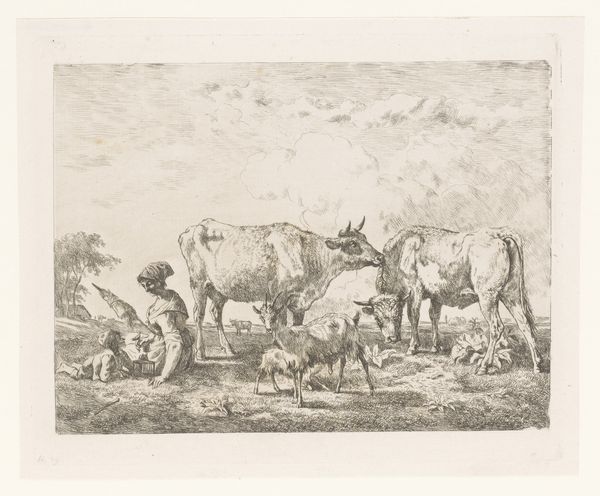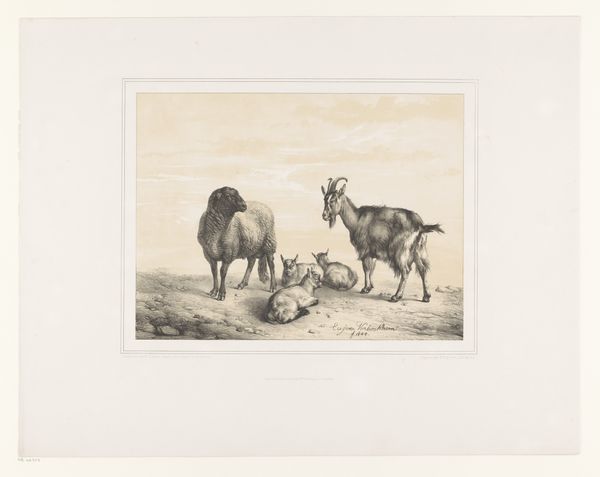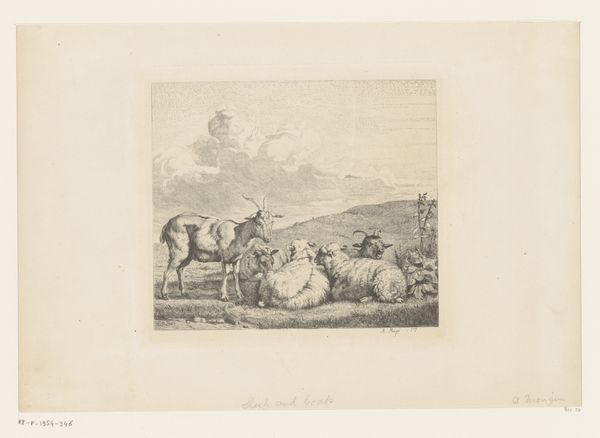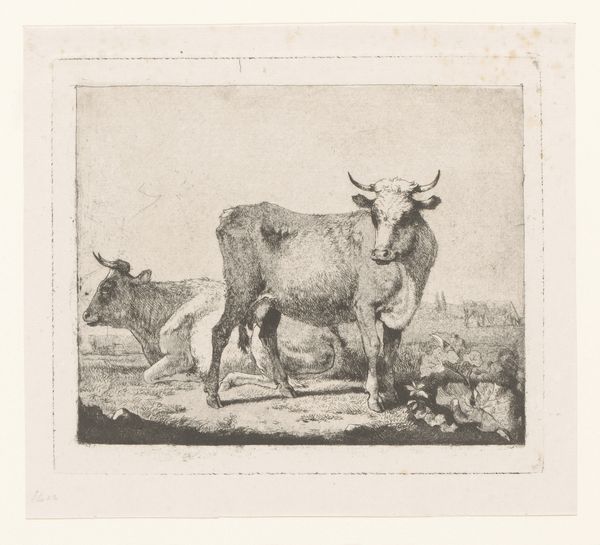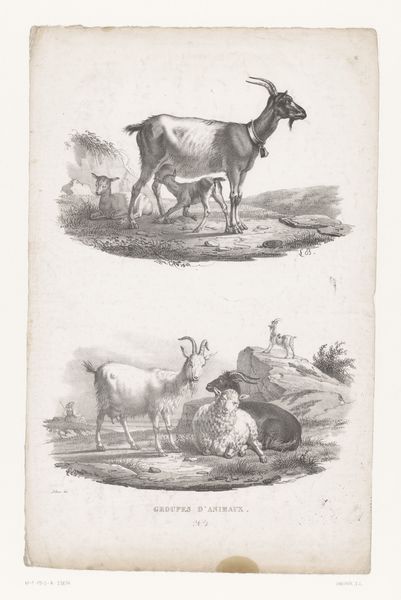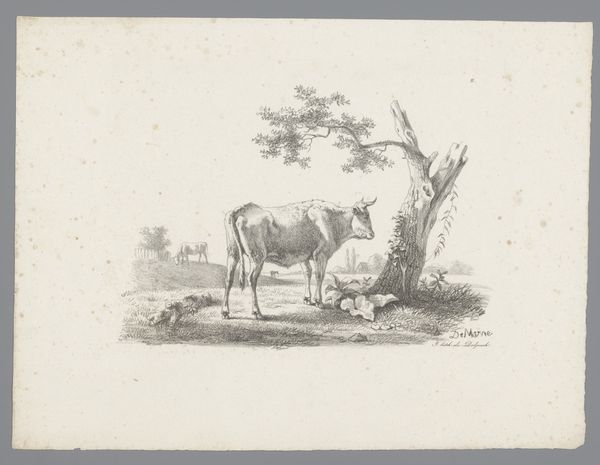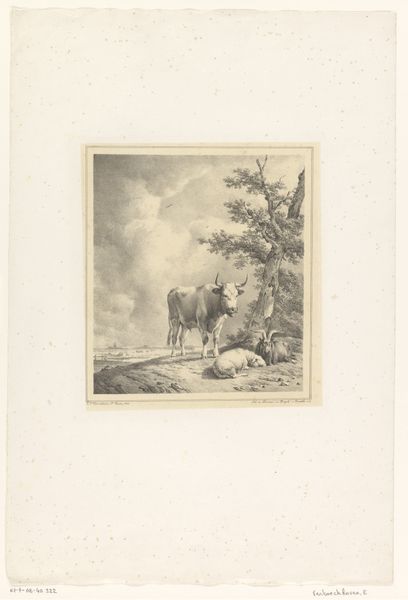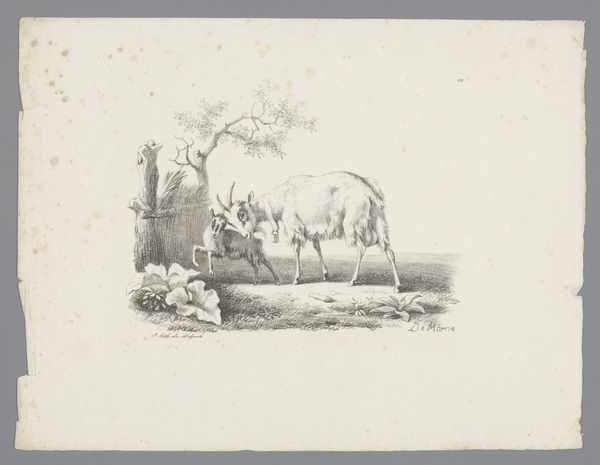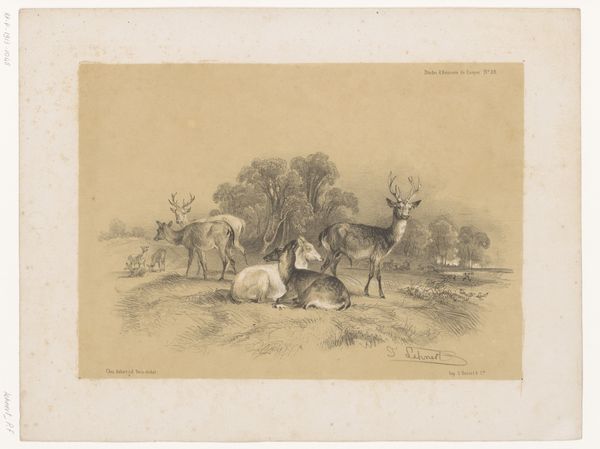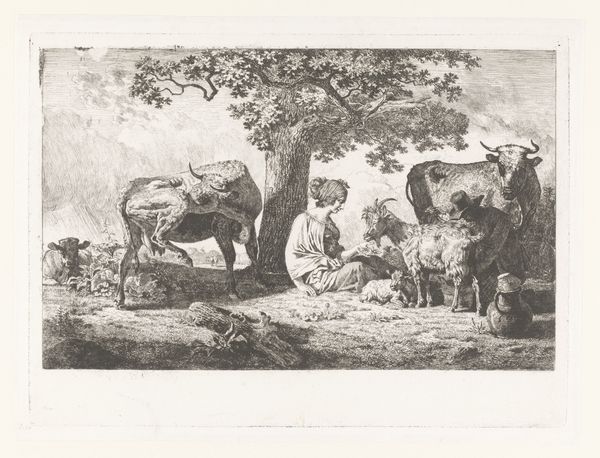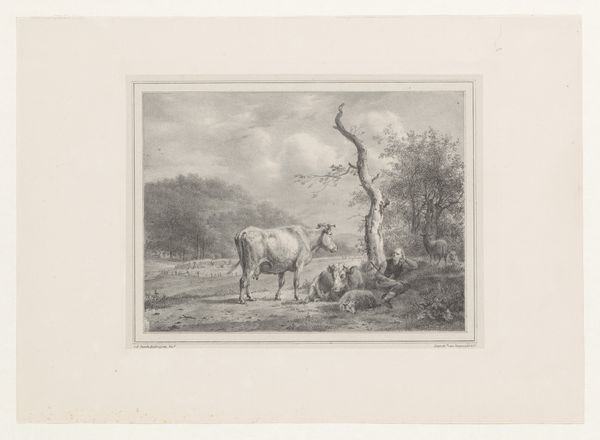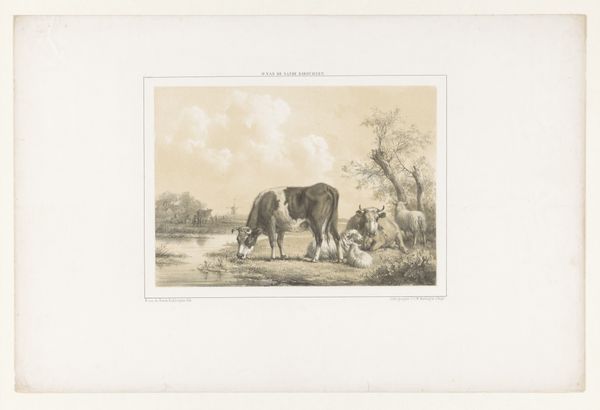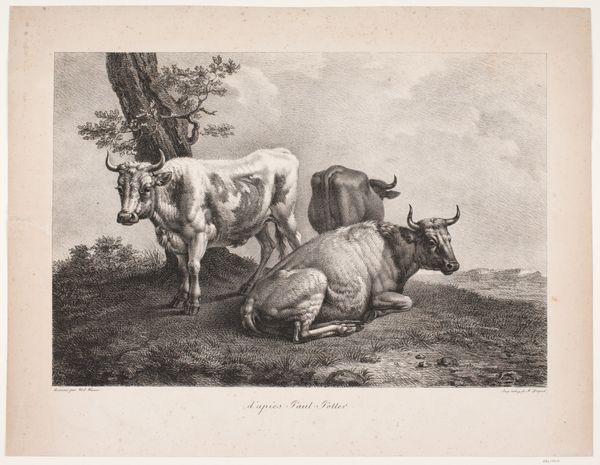
print, engraving
#
animal
# print
#
landscape
#
line
#
remaining negative space
#
engraving
#
realism
Dimensions: height 191 mm, width 257 mm
Copyright: Rijks Museum: Open Domain
Curator: Let's delve into "Jachthonden," or "Hunting Dogs," an engraving by Richard Earlom, dating roughly from 1752 to 1822. It’s a rather striking piece from the Rijksmuseum's collection. Editor: My initial reaction is a kind of quiet stateliness. The tonal range achieved in this print, from the near black to soft grays, really gives these dogs a dignified presence. I can almost feel the cool, crisp air of the hunt. Curator: It's fascinating to consider Earlom's technique, how he achieved this nuanced tonal range with engraving. Think about the laborious process of carving these lines into a copper plate. This isn't just about depicting animals; it's about mastering the material constraints to reproduce texture, light and form through printed multiples, effectively democratizing images for a wider audience. Editor: Absolutely. But beyond the process, what stands out to me is the symbolic weight of the imagery. Dogs, especially hunting dogs, have long been associated with loyalty, nobility, and aristocratic pursuits. Notice the hunting gear laid out—a subtle reinforcement of their purpose and the lifestyle they represent. There’s a powerful visual narrative embedded here, hinting at privilege and class. Curator: And let’s consider the implications of this being a print. It would have been circulated, consumed, and collected. Each impression contributes to the visual rhetoric reinforcing notions about wealth, land ownership and leisure—hunting not only as a means of subsistence, but as a cultural symbol. Editor: Yes, the act of making multiple copies spreads and solidifies cultural meaning, reaching further and wider. The individual dogs even feel significant: their varied poses, the tilt of a head, communicate almost individual character. Are they just representations of animals, or also symbolic of types of personalities within that upper echelon of society? Curator: Perhaps both. The act of collecting and displaying this print serves to affirm the owner’s tastes and understanding of these visual codes. How very self-referential! We’re observing not just a hunt but its encoding in consumer culture. Editor: A very clever synthesis indeed, looking at Earlom’s process in combination with these enduring symbols helps enrich our understanding of the art itself and its period. Curator: A most insightful reading, illuminating how even a seemingly straightforward image carries layers of socio-historical significance.
Comments
No comments
Be the first to comment and join the conversation on the ultimate creative platform.
